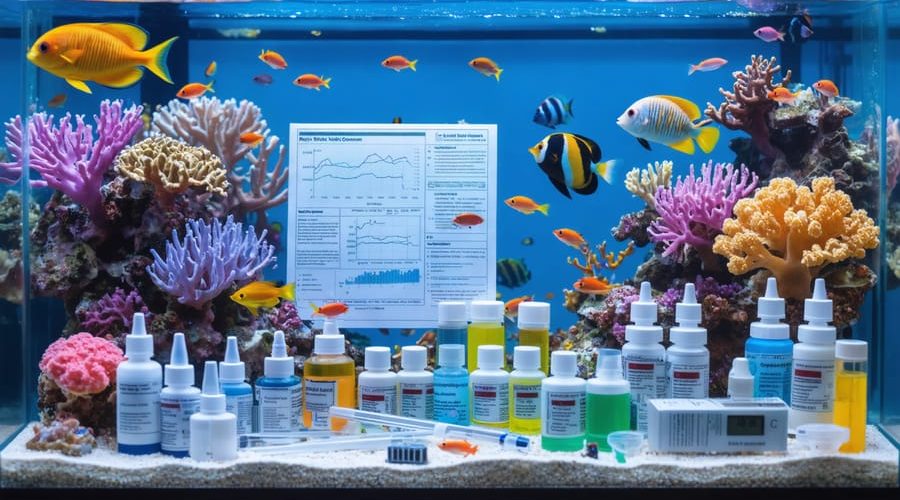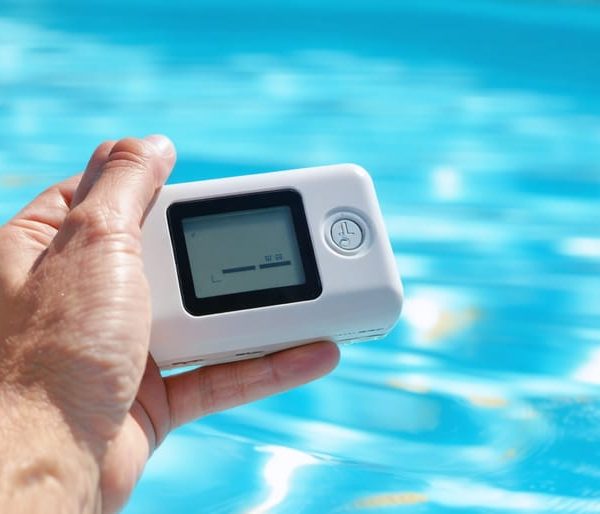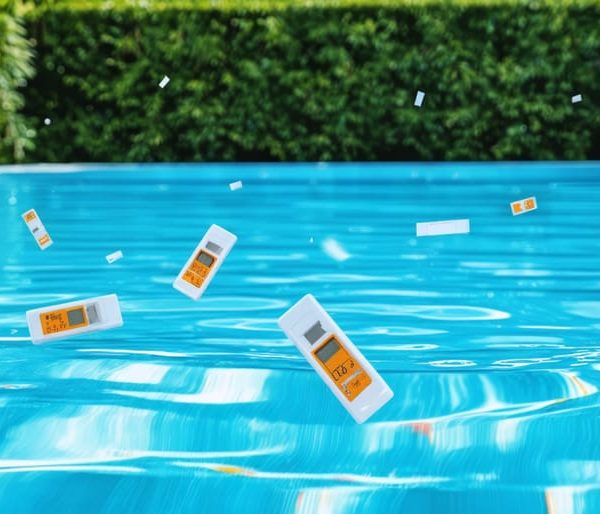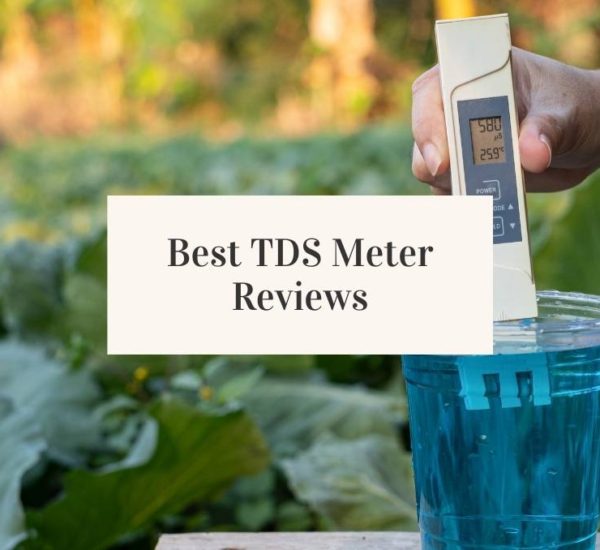Testing your saltwater aquarium’s water parameters isn’t just about maintaining clarity – it’s the foundation of a thriving marine ecosystem. Regular water testing acts as an early warning system, detecting potential problems before they harm your delicate coral reef inhabitants or prized fish specimens. While aquarists can monitor dozens of parameters, focusing on five critical measurements – salinity, pH, ammonia, nitrites, and nitrates – provides the essential data needed to make informed decisions about water changes and chemical adjustments. Understanding these core parameters, mastering proper testing techniques, and maintaining accurate records transforms water testing from a tedious chore into a powerful tool for achieving long-term aquarium success. Whether you’re a newcomer to the marine aquarium hobby or a seasoned reef keeper, establishing a consistent water testing routine remains the single most important practice for preventing water quality disasters and ensuring your underwater ecosystem flourishes.
Critical Water Parameters for Saltwater Aquariums
Primary Parameters
Maintaining optimal water parameters is crucial for a thriving saltwater aquarium, and using reliable testing methods is essential for success. The five primary parameters you must monitor regularly are salinity, pH, ammonia, nitrite, and nitrate levels.
Salinity measures the salt concentration in your aquarium water, typically ranging between 1.020-1.025 specific gravity for most marine systems. Test this daily using a refractometer or hydrometer to ensure stability, as sudden changes can stress your marine life.
pH levels should remain between 8.1-8.4 in a saltwater aquarium. Test pH at least weekly, preferably at the same time each day, as it naturally fluctuates throughout the day due to biological processes. Significant pH swings can harm coral growth and fish health.
Ammonia and nitrite should always read zero in an established aquarium. These compounds are highly toxic to marine life, even in small amounts. Test for both at least weekly, or more frequently in new setups and after adding new livestock.
Nitrate, the end product of the nitrogen cycle, should be kept below 20 ppm for fish-only systems and under 10 ppm for reef aquariums. While less immediately toxic than ammonia or nitrite, elevated nitrate levels can stress marine life and promote unwanted algae growth.
Regular testing of these parameters helps prevent potential problems before they become serious issues. Keep a log of your test results to track trends and identify potential problems early.
Secondary Parameters
Beyond the essential parameters, several secondary measurements are crucial for maintaining a thriving saltwater aquarium. Alkalinity testing is vital as it measures your tank’s buffering capacity, which helps maintain stable pH levels. Ideal alkalinity levels typically range between 8-12 dKH (degree of carbonate hardness). Test kits use color-changing solutions or digital meters to measure alkalinity accurately.
Calcium testing is essential for coral reef tanks, as corals and other invertebrates need calcium to build their skeletal structures. The optimal calcium range is typically 380-450 ppm (parts per million). Regular testing helps prevent calcium depletion, which can slow coral growth and affect shell development in various marine creatures.
Phosphate levels require careful monitoring because excessive amounts can fuel unwanted algae growth. Aim to maintain phosphate levels below 0.05 ppm. Modern phosphate tests are highly accurate and can detect even minute quantities, helping you prevent potential algae blooms before they occur.
Magnesium testing is often overlooked but plays a crucial role in coral health and calcium uptake. The ideal magnesium range for most reef tanks is 1250-1350 ppm. Test kits typically use titration methods to measure magnesium levels, and results should be monitored monthly.
For all these parameters, it’s recommended to maintain a testing schedule and log results to track changes over time. This practice helps identify trends and potential issues before they become serious problems. Digital testing methods are becoming increasingly popular, offering precise measurements and convenient data tracking capabilities.
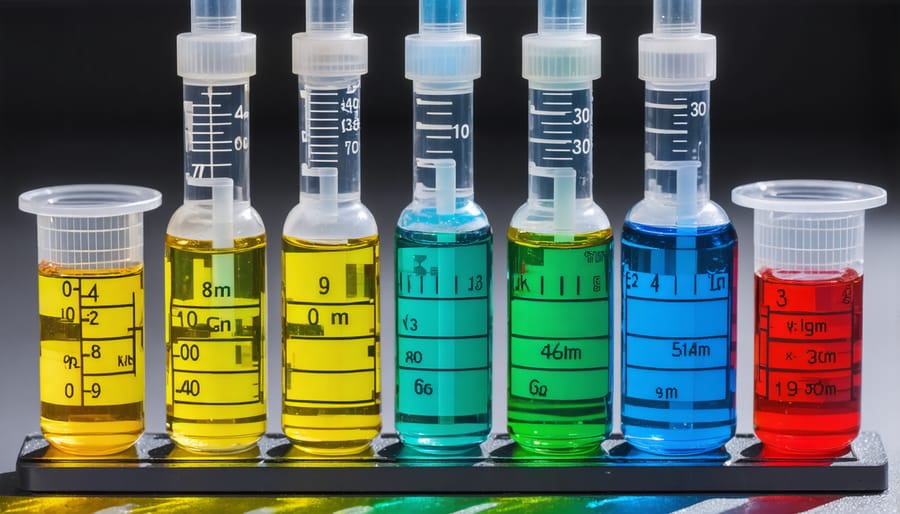
Testing Equipment and Methods
Test Kits vs. Digital Meters
When it comes to monitoring your saltwater aquarium’s parameters, you have two main options: traditional test kits and digital testing meters. Each method has its distinct advantages and limitations, making them suitable for different situations.
Traditional test kits typically use liquid reagents or test strips to measure various water parameters through color changes. These water testing equipment options are generally more affordable and provide reliable results for multiple parameters. They’re excellent for routine testing and don’t require calibration or batteries. However, they do require careful measurement, good lighting for color matching, and have limited shelf lives.
Digital meters offer instant readings and eliminate the subjectivity of color matching. They’re particularly useful for frequently tested parameters like salinity, pH, and temperature. Modern digital meters often feature data logging capabilities and smartphone connectivity, making it easier to track changes over time. The main drawbacks include higher initial costs, regular calibration requirements, and the need for battery replacement or charging.
For optimal aquarium maintenance, many experienced aquarists combine both methods. They use digital meters for daily quick checks and traditional test kits for comprehensive weekly testing. This dual approach ensures accuracy while maximizing convenience and reliability in maintaining proper water chemistry.
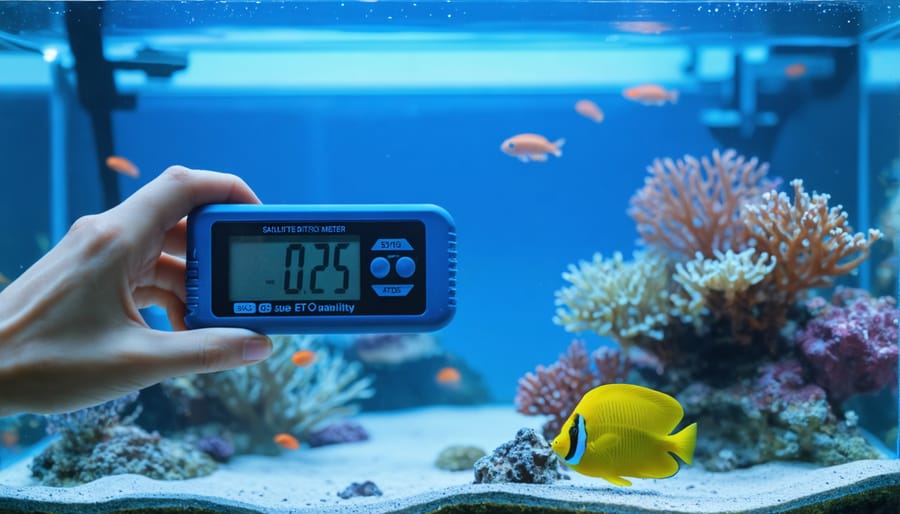
Testing Frequency Guidelines
Regular water testing is crucial for maintaining a healthy saltwater aquarium environment. For new tanks or those recovering from issues, daily testing is recommended for the first two weeks. After the tank stabilizes, you can adopt a more routine schedule.
Essential parameters like salinity, temperature, and pH should be checked daily or at minimum three times per week. These quick tests help catch potential problems early and maintain stable conditions for your marine life.
Ammonia, nitrite, and nitrate levels should be tested twice weekly during the first month of setup and weekly thereafter. If you notice any unusual behavior in your fish or coral, increase testing frequency immediately.
Alkalinity and calcium should be monitored weekly for reef tanks, while magnesium can be tested every two weeks. Phosphate levels should be checked weekly to prevent unwanted algae growth.
Less frequent but equally important parameters include iodine, strontium, and trace elements, which can be tested monthly. However, if you keep sensitive coral species, consider testing these parameters bi-weekly.
Keep a testing log to track patterns and changes over time. This record helps identify trends and makes it easier to maintain optimal water conditions. During major tank changes, such as adding new livestock or changing equipment, increase testing frequency temporarily to ensure stability.
Interpreting Test Results
Ideal Parameter Ranges
Maintaining proper water parameters is crucial for a thriving saltwater aquarium. The ideal pH range should be between 8.1 and 8.4, closely matching natural ocean conditions. Salinity should be maintained between 1.020 and 1.025 specific gravity, with reef tanks typically requiring the higher end of this range.
Temperature should remain stable between 75-82°F (24-28°C), with most tropical fish thriving at around 78°F (26°C). Ammonia and nitrite levels should always read zero, as any detectable amount can stress or harm marine life. Nitrate levels should stay below 20 ppm, with reef tanks preferring levels under 10 ppm.
Alkalinity (dKH) should range from 8-12 dKH, helping maintain stable pH and supporting coral growth. Calcium levels need to measure between 380-450 ppm for proper coral skeleton development. Magnesium should stay between 1250-1350 ppm to support proper calcium uptake and coral growth.
Phosphate levels should remain below 0.03 ppm to prevent unwanted algae growth while ensuring coral health. Regular testing and maintaining these parameters within their ideal ranges will help ensure a healthy, vibrant marine ecosystem.
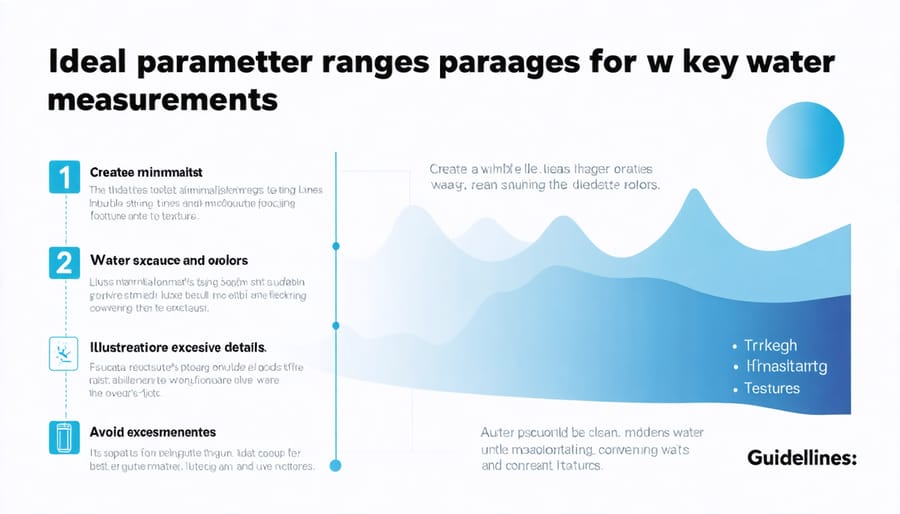
Common Issues and Solutions
When test results reveal high ammonia levels, perform an immediate 25% water change and check your filtration system for proper functioning. For persistent nitrate issues, increase the frequency of water changes and consider adding macro-algae to help absorb excess nutrients.
If pH levels drift below 8.0, gradually adjust them using a marine buffer solution, never making sudden changes that could stress your fish. High phosphate readings often indicate overfeeding or insufficient water changes – reduce feeding portions and clean the substrate more thoroughly.
Calcium and alkalinity imbalances commonly affect coral health. When levels drop, use a two-part dosing system to maintain proper parameters. Low magnesium can inhibit calcium absorption, so ensure levels stay between 1250-1350 ppm.
For sudden salinity fluctuations, check your auto-top-off system and mixing procedures. Always use a quality refractometer for accurate measurements. If oxygen levels seem low (indicated by fish gasping at the surface), increase surface agitation with powerheads or adjust your protein skimmer’s output.
Remember that stable parameters, even if slightly off target, are often better than frequent dramatic corrections.
Regular water testing is the cornerstone of a healthy saltwater aquarium ecosystem. By monitoring essential parameters like salinity, pH, ammonia, nitrites, nitrates, alkalinity, and calcium levels, you can prevent potential problems before they harm your marine life. Make testing a consistent part of your maintenance routine, ideally performing basic tests weekly and comprehensive tests monthly. Remember that different marine species have specific requirements, so maintaining optimal water chemistry is crucial for their survival and growth. Keep detailed records of your test results to track patterns and make informed decisions about water changes and chemical adjustments. With diligent testing and proper maintenance, you’ll create a thriving environment for your saltwater aquarium inhabitants while gaining valuable insights into marine chemistry and ecosystem management.
